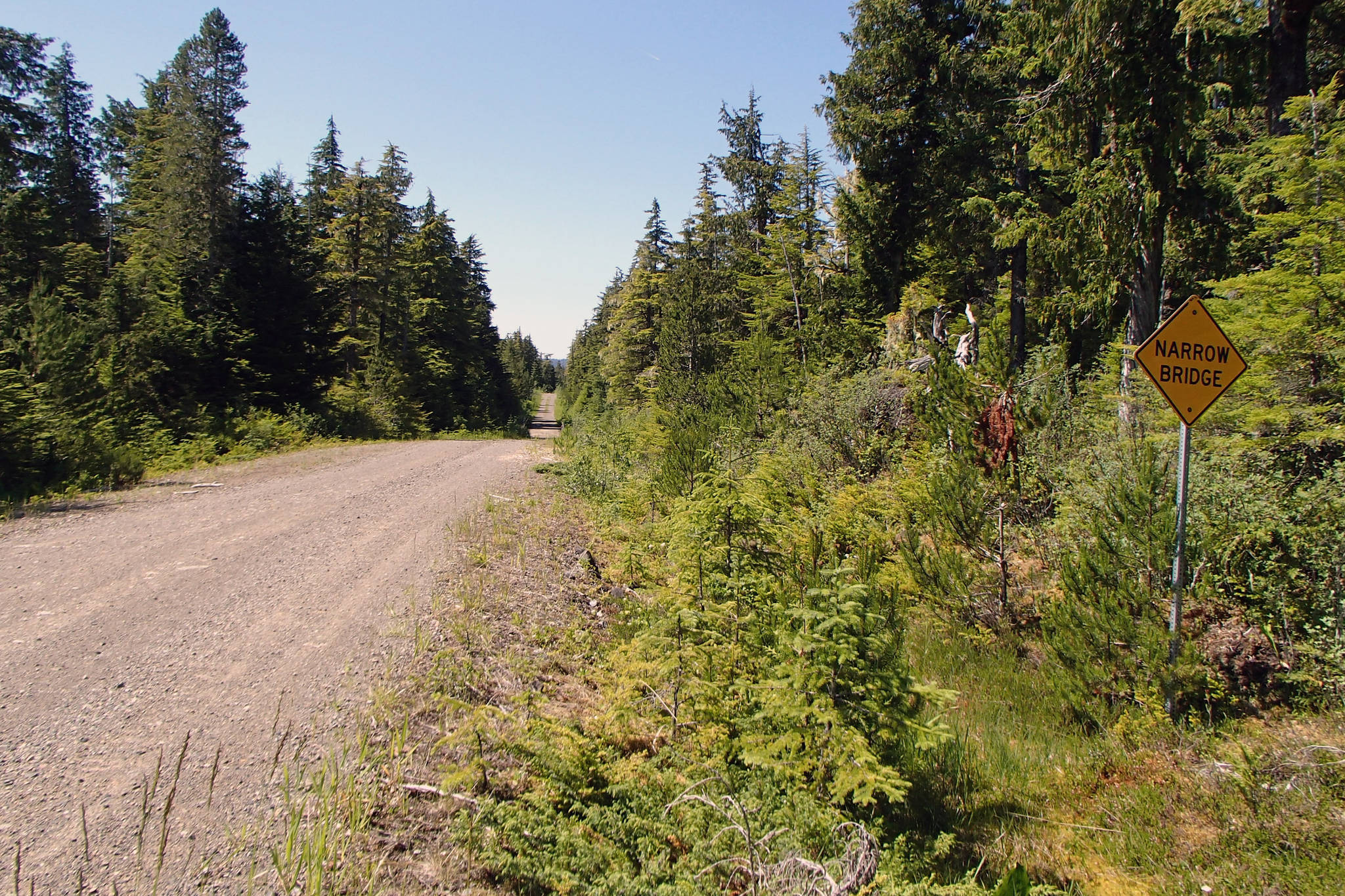A gravel road from the city of Kake to a boat dock on the other side of Kupreanof Island is in the works at a cost of $40 million.
A patchwork of logging roads already exists, and the project would connect those roads to make a 35-mile, single-lane road between Kake and 12-mile Creek north of the city of Kupreanof.
The money was allocated in 2012 by State Sen. Bert Stedman, R-Sitka, as part of a program called “Roads to Resources” meant to help access to natural resources.
“We need to have a transportation system in Southeast,” Stedman said in a phone interview. “This road is part of a bigger drive to help stabilize and expand the economy in Southeast.”
Stedman also said the road would make maintenance on a proposed electrical intertie project from Kake to Petersburg.
But that project is on hold, according to Trey Acteson, CEO of Southeast Alaska Power Agency, the company in charge to that project.
“The economics of the project are not very favorable,” Acteson said in a phone interview. Funding for the project would most likely have to come from the state, he said, and if the road was built it would reduce the cost of construction significantly.
“Does the road to Kake potentially help the economics of the Kake Petersburg project? I would say definitely yes,” Acteson said.
But the Department of Transportation and Public Facilities, which is responsible for the road project, isn’t working with the intertie project in mind.
“I haven’t coordinated with those guys,” said Greg Lockwood, project manager for the road at DOT.
The 2016 environmental impact report for the intertie is included in the project documents on the Kake access road website, but only because there is a lot of work that overlaps with what DOT is currently doing, Lockwood said.
While there may be no immediate plans to build the intertie, Stedman said, the state spends hundreds of millions on energy expansion.
“Why can’t folks in Kake have the same access to financial assistance other parts of the state get,” Stedman said. “All Alaskans own and should have equal access to the state’s treasury.”
DOT’s stated purpose and need for the project is to increase recreational and subsistence opportunities on Kupreanof Island. Some locals on the island have said they don’t foresee the road getting a lot of use and would rather see that money used on the state’s ailing ferry system.
“They say it’s primarily for subsistence, that’s not going to boost the economies of either Kake or Petersburg,” said Jeigh Stanton-Gregor, a member of the Petersburg Borough Assembly. “The ferry system helps both Kake and Petersburg and all of Southeast Alaska.”
Stanton-Gregor said representatives from DOT haven’t spoken to city officials about the project in nearly four years. Petersburg Borough Manager Stephen Giesbrecht also said it was about four years since anyone at DOT spoke with borough representatives about the project.
Stanton-Gregor said he would be introducing a motion at the Assembly’s meeting in February asking the Legislature to reconsider the project.
“As much as I appreciate these resources being allocated to our community, it’s much wiser to give it to all of Southeast Alaska,” he said.
Kupreanof Island residents also had concerns about who would be responsible for maintaining the road, particularly during the winter.
“I don’t see how it would be maintained during the winter,” said Joel Jackson, president of the Organized Village of Kake. “We’d rather have the ferry system back.”
On Jan. 7, DOT met with contractors to explain what the department was looking for in its request for proposal. Roughly 21 miles of logging road already exists according to DOT documents, and contractors would be responsible for the construction of an additional 13 miles.
Proposals are due to DOT, Jan. 23, according to Sam Dapcevich, public information officer for DOT.
DOT’s plans call for the road to end at a boat dock at 12-mile Beach, which is 12 miles north of Petersburg. But that’s not where the road was supposed to end, according to Stedman.
“The Legislature appropriated a road from Kake to Petersburg, it should go to at least 5-mile (beach),” Stedman said. “This project is different. We’ll continue to work with DOT to rectify that issue.”
Paul Robbins, public affairs officer for the National Forest Service said it was not clear if logging would be able to take place in that area of the Tongass National Forest. In an email Thursday, Robbins said he was coordinating with Forest Service staff in Washington, D.C. and would be able to provide an answer at a later date.
Asked about local opposition to the project, Dapcevich said the department had received its orders to complete the project and intended to do so unless otherwise instructed.
Representatives from Commissioner John McKinnon’s office did not return calls asking about potentially ending the project.
Reallocating the money would require legislative action, according to Stedman, something which would have a dubious chance of success.
• Contact reporter Peter Segall at 523-2228 or psegall@juneauempire.com.

